Gender and Factory Work in the Upper Peninsula – Part One
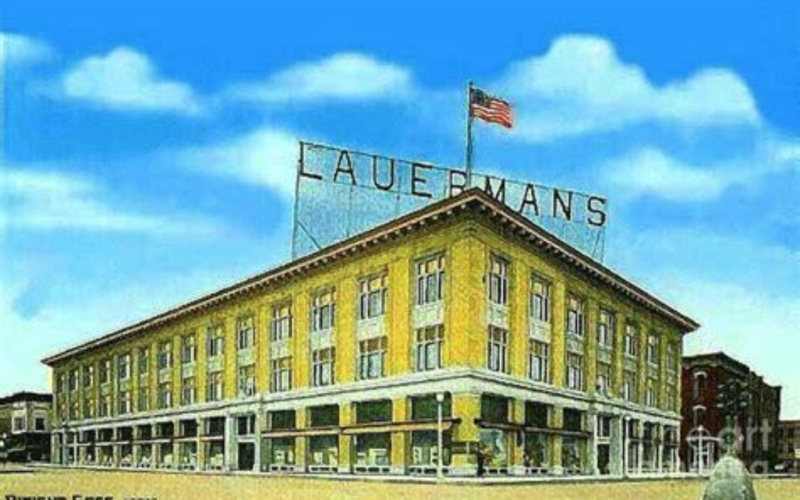
“Rural Voices” shares cultural, educational, economic and artistic views of people who have lived and thrived in the Upper Peninsula. Each of our authors in Rural Voices may be living here in the U.P. or living someplace around the globe, but the U.P. is an important part of who they are and what their beliefs and values are today. Rural Voices wants to share the voices of our neighbors and friends about life and experiences in the UP.
PART ONE
A thorough history of the non-mining industries in the Upper Peninsula of Michigan has not been fully developed over the years. If the broader picture has not been realized, the story of female factory workers has rarely been mentioned. The objective of this study is to provide new insights into the history of this facet of women’s heritage in this region.
The two major non-mining communities in the Upper Peninsula were Menominee-Marinette in the southernmost point of the Upper Peninsula and Sault Ste. Marie in the eastern Peninsula, where industry dominated the economy.
Menominee began in the late nineteenth century as a sawmill community along with neighboring Marinette, Wisconsin across the Menominee River. Eventually they constituted the largest mill town in the world as promoted by the communities.
However, as with any natural resource, the millions of board feet of timber along the Menominee River did not last forever. By the first decade of the twentieth century the decline had set in and the milling industry, the base of the local economy was gone. Local businessmen, realizing their dilemma, turned to attracting new industries that could operate on the base of experienced workers.
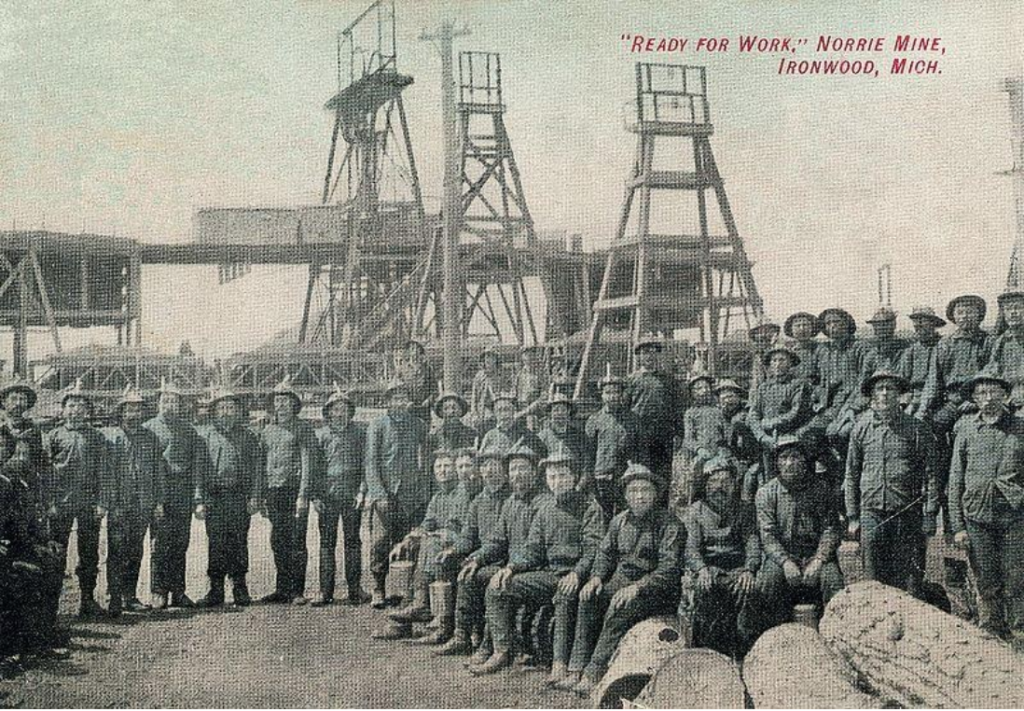
By 1918-1919 Menominee had become the industrial heart of the Upper Peninsula. There were three breweries; the Lloyd Manufacturing Company making baby buggies and later out-door furniture; Menominee Motor Truck Company; Menominee River Sugar Company, which would developed into the largest sugar refinery in Michigan and the third largest in the United States; the provisioning outfit, Carpenter Cook Company; Michigan Refining & Preserving Company dealing with fruit and pickles; Michigan Coffee & Spice Company; and the Richardson Shoe Company.
These companies provided jobs for the largest number of women in the 1920s in the UP. The breakdown of female jobs in Menominee: Carpenter Cook Company: 14, Herald Leader newspaper: 10, Michigan Coffee & Spice: 27, Michigan Refining and Preserving: 12, Tideman Electric Manufacturing Company producing a variety of electrical apparatus: 112.
When you add women working in small numbers in other occupations the number rises to 355 with 49 percent or 175 women employed in these industries.
A major source of employment for women were the department stores, which developed in the Upper Peninsula and to the south of Menominee across the river in Marinette, Wisconsin. The difference between the clothing or women’s shop was that department stores were usually several stories in size and carried a variety of goods–groceries, clothing for women, men and children, undergarments, notions, yarn, cloth, linen, ready-made clothing, furniture, carpets, draperies, office supplies–to name a few housed in separate departments.
Lauermans, which opened in 1904, was the leading department store in the southern Upper Peninsula and a majority of its employees were women and its payroll fluctuated between 250 and 350 but peaked in the 1940s at 440. The women who worked there were known for their courtesy, efficiency, and loyalty to the store. The store closed in September 1985.
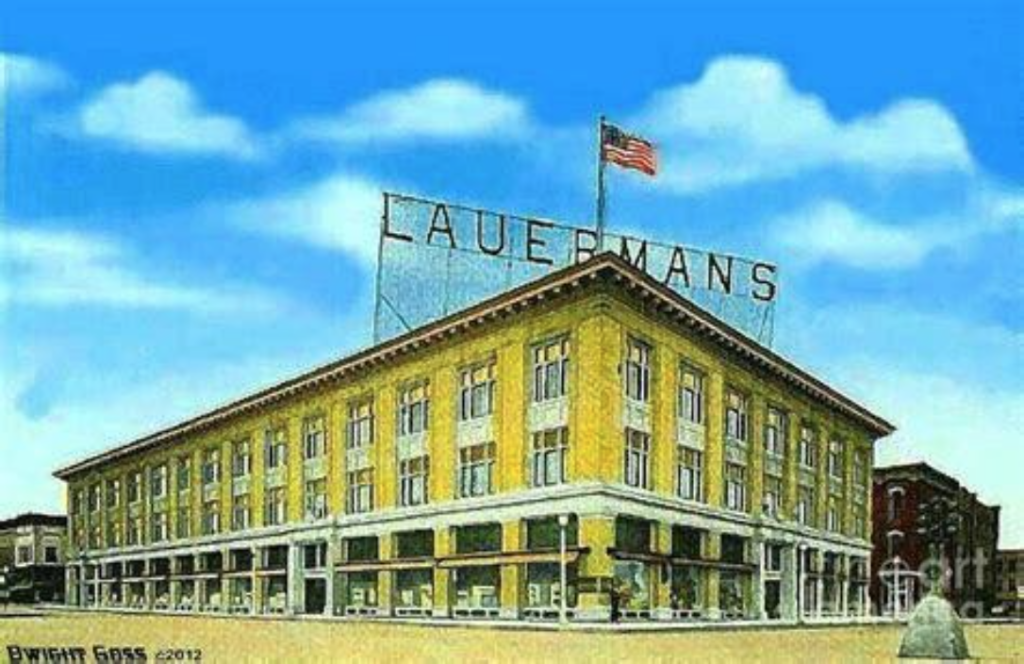
dgd
Marinette, Wisconsin developed as a glove and textile center with a long-established reputation for skilled needle-work craftsmanship and as an employment center for women from both sides of the river.
The Marinette Knitting Mill was started in 1904 by the Lauerman Bros. at the same time that their department store opened. It was a time when local businessmen sought to diversify from the forest products industry. The mills provided products for the store and were shipped to stores around the world offering top-of-the-line, high-fashion knitwear.
A second mill was established in Oconto and in the 1920s, the two mills had a total work force of 400 employees. During World War II, able to hire a large number of women – 1,000 – the mill produced gloves, mufflers, and sweaters for the Allied fighting forces. Later at one time they held a contract for a line of of Disney clothing products. The mill closed and in 1960 Harmon Juster opened Harmon Knitwear Inc. in Marinette. They produced high-quality women’s garments. Harmon closed in 1974.
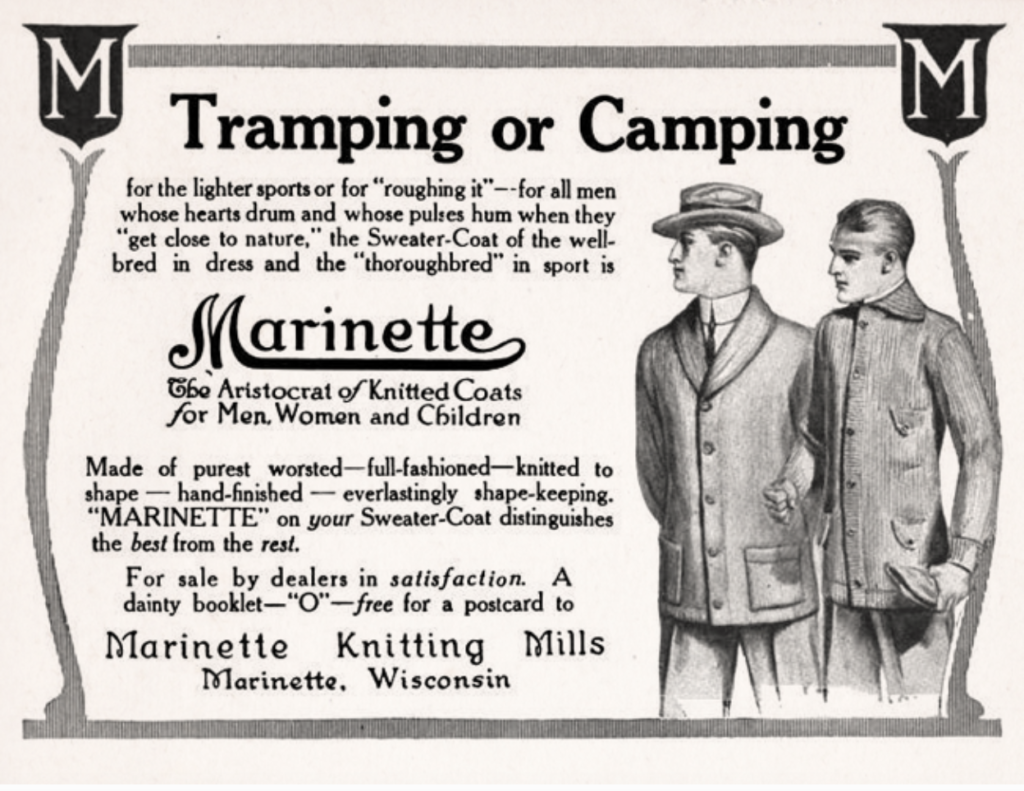
The Boreal Glove Manufacturing Company opened in Marinette in 1907 when their plant in Goshen, Indiana burned and they decided to move north. They initially hired 125 people with plans to reach capacity at 200 employees. Unfortunately, as with many of these factories that moved north, they sought to underpay their female employees.
In 1916 it was reported by union inspectors that the women were paid $3.50 to work a ten-hour day. A number of them were forced to augment their salaries by working two nights a week as theater usherettes for $2.00 a week.
For many years Boreal was one of Marinette’s leading industries. During World War I it provided gloves for the war effort. Even during the economic downturn after World War I, in November 1919 the plant expanded and was hiring 250 workers.
It operated through the Depression and in 1934 there were 420 workers fabricating gloves. Even prior to the declaration of war on December 8, 1941, the company had a $149,100 government contract to produce horsehide gloves, which brought the total federal money to the company to $1,524,100.
During World War II, 85 percent of the company’s output was for the war effort concentrating on leather gloves and some work gloves. In February 1943 the company received an “E” pennant for production. Each individual employee received an Army-Navy “E” lapel pin.
When the Boreal plant closed in 1965 all was not lost, since the Menominee-Marinette area wanted to maintain its reputation as a glove manufacturing area. The Milwaukee Glove Company, which had been established in 1909 had opened a subsidiary plant in Berlin, Wisconsin in 1960. Given the reputation of Marinette they began the construction of a plant in Marinette beginning in January 1966 that would manufacture men’s leather gloves.
Glove production was so profitable that the newly created Michigan Glove Company developed the Menominee Glove Company, which opened as a subsidiary of the Boreal Manufacturing Company in June 1942. The new plant was located on the third floor of the Menominee Community Building, which housed a Montgomery Ward’s store and an A&P grocery. It was in full production during World War II.
In February 1943 the company received the “E” pennant for efficiency and each individual employee received an Army-Navy “E” lapel pin. Due to the negative economic conditions in the area at the time, the plant was closed in the opening days of 1955. About 125 women transferred to jobs across the river at Boreal.
Sault Ste. Marie was the second industrial center in the UP. In 1910 the immigrant women in the city could be grouped into traditional occupations. Twenty women were involved with cleaning clothing; forty were engaged in clothing creation and repair as seamstresses, tailoresses, and dressmakers; 69 were waitresses and cooks; 78 were engaged as maid servants, and housework. A group was trained as nurses (10), teachers (37), telephone operators (7), and saleswomen (13).
At the Soo in 1918-1919 there were 422 women employed in a variety of jobs. The
Northwestern Leather Company employed 74 women, while the Soo Woolen Mill hired 37 women, and the last major industry Union Carbide hired few women.
As a result when added together, 26 percent of the women employed at the Soo had factory jobs. There were another seventy-one women hired by clothing stores and five-and-dime stores: Cowan & Hunt (29), D.K. Moses & Company (23) and F.W. Woolworth (10).
Thirty-nine women were working in an aspect of the clothing business: millinery (10), tailoring (7), and dry cleaning and laundering (22). Another twenty-three were engaged in food service: Jacket from the Soo Woolen Mill grocery (4), ice cream (2), dairy products (2), meats (10), bakery goods (3), and fruit (2). Since the Soo had long been a tourist destination, it had over a dozen hotels like the well-known Chippewa House that hired seventy-seven women to their staffs as chambermaids, clerks, cleaning girls, laundresses, cooks, and waitresses.
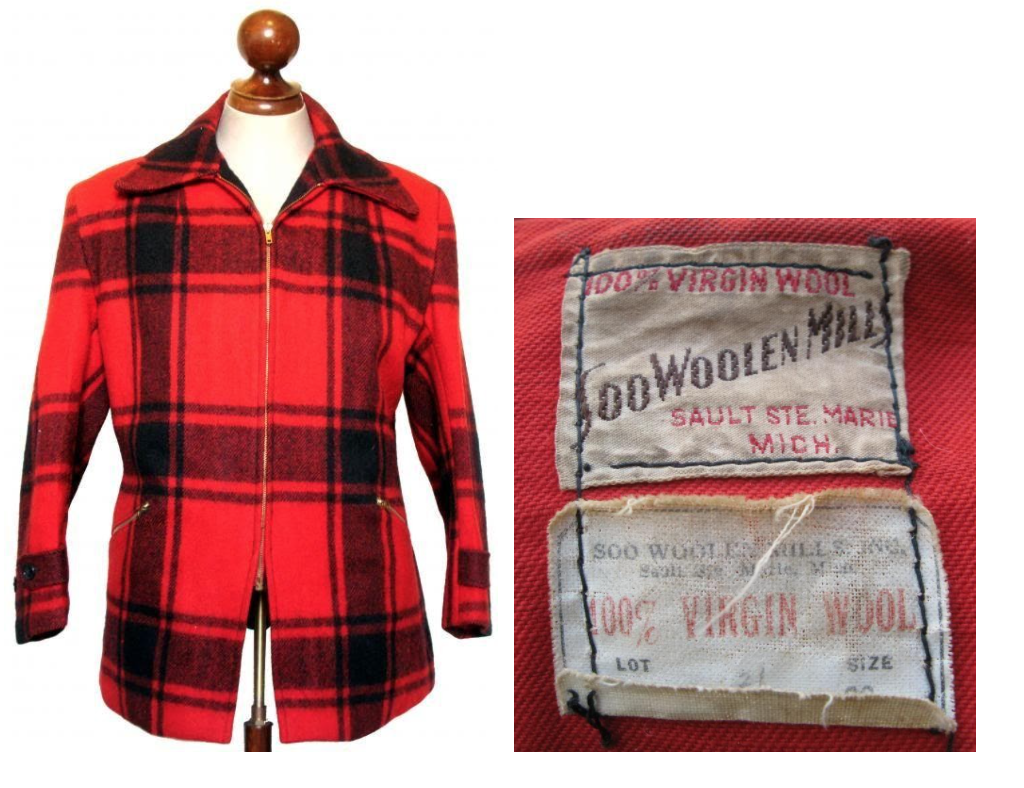
The Soo had two major department stores in the late 19th and early 20th centuries. Penzlauer & Bros. started in 1868 and gradually grew so that in 1887 they established what became “a mammoth” department with some 17,790 square feet, four stories in height.
It was considered at opening “the largest general store in Michigan outside Detroit.” Interestingly, they had a large trade in the lumber camps. Penzlauer Bros. remained in business until 1906 when they sold out and established a department store in Los Angeles, California. Cowan & Hunt bought them out and called the store, Penzlauer Bros. & Company and on January 1, 1918 the name was changed to Cowan & Hunt. Both companies hired women clerks and in 1918 there were 29 women working there.
The career of J. Alfred Burns across the central and eastern Upper Peninsula provided jobs for many women starting with a department store in Sault Ste, Marie. In 1922 he partnered with George Cowell of Munising and two years later they opened a branch in Newberry and a year later in Munising.
In 1933 when they dissolved the partnership, Burns joined with Lauerman Bros of Marinette and the firm operated under the name, Burns Department Store. In February 1937 Burns opened a store at the Soo. At one time they had smaller branch stores in: Newberry, Munising, St. Ignace, Gladstone, Norway, Marquette, and Ishpeming. Burns eventually acquired the Lauerman interests and closed all of the stores except those at Sault Ste. Marie, Newberry, and Munising.
The Soo store closed in 1964 followed by the Newberry store in 1966 and the Munising store soon after.
The other department store was The Leader, which D.K. Moses opened in 1888 and in 1904 when it reopened after a fire it was two stories in height with a basement store and covered 22,000 square feet. At this time it was described as “one of the most complete department stores to be found in the north country.” In 1918 the store employed 23 female clerks.
Early, Escanaba became a major shopping center and destination for people seeking a variety of fine quality goods in department stores. Characteristic of department stores, the majority of their clerks were women. The oldest store was the Ed Erickson Company that opened on July 1, 1878 and continued in operation until Lauerman bought them out in 1928 and opened their own department store.
It was a large three-story structure with multiple departments. It ceased operation in 1959. They also opened a successful department store in Manistique in the 1920s that operated into the 1970s.
The Fair Savings Bank Department Store, later abbreviated to the Fair Store, opened its doors in 1888 and operated on Ludington Avenue. A brief review of the management-employee relations show they had a concern for the clerks, most of whom were women.
In July 1914, for instance, manager Herman Salinsky, sponsored an elaborate day excursion to the Garden Peninsula for 100 employees and their guests totaling 300 people aboard the steamer Saugatuck and entertained by the Escanaba Military Band as they crossed Bay de Noc. They were met by local folks and the highlight of the day was a baseball game between Fayette-Garden and Fair teams.
The Fair Store Efficiency Club was created so that employees could air problems to management and there were discussions around such topics as: customer service, efficiency, economics. In 1921 owner Herman Gessner allowed the clerks to unionize, despite the fact that his competitors in Escanaba initially refused to allow the clerks to organize.
He also cut all evening work except on Saturday and on Sundays and holidays. While Michigan state labor law said women were limited to working 54 hours a week, the Fair Store limited them to 49 hour a week in the summer. The Fair Store closed in 1965.
The last of the major department stores in Escanaba was the Boston Store Company. It had its origin with Isaac and Rachel Kratzenstein. When Isaac died Rachel and her sons opened Kratze Bros Department Store in 1912. It was bought by the Boston Store Company, which was established by Charles Netcher and local businessmen in 1921. In the deal, the building and stock came to $125,000-$150,000, which was “one of the biggest mercantile deals in the history of Escanaba.
The newly-organized company was one of the largest and owned one of the most modern and complete mercantile buildings in the Upper Peninsula. Despite it being considered a mammoth department store, it closed in 1928 and Montgomery Ward filled the gap soon after. All of these department stores provided jobs for hundreds of women over the years.
Women found employment in other businesses as well. The woodenware producer, Escanaba Manufacturing Company, hired 174 women out of 360 employees and most of these were artists and craftspeople decorating woodenware. The Bird’s Eye Veneer Company hired only thirteen women.
It is interesting to note that in the 1920s the General Manager, C.J. Byrns demanded that the plant be kept absolutely clean both inside and out. He loved plants and gardens and the factory was surrounded by extensive gardens that the women could enjoy during their lunch break. The lunch room was immaculate and the women and men were provided with free hot coffee and cream.
Elsewhere in town, eleven women were working in bakery goods and seven in confectioneries: Candy Land, Boston Candy Store and Bon Ton Candy Kitchen. In 1947, Bell’s Restaurant was opened by its new proprietor, Inez E. Taylor. She hired five cooks “of long experience”: Elizabeth Byrnes who had worked for Belle’s Coffee shop since 1931, Ida Bawden, Eva Borgeau, Alice Menard, and Emma Lemmerand.
The job situation for women in Escanaba changed after World War II when local businessmen and the Chamber of Commerce promoted the introduction of new industries that “will now pretty well absorb the female labor supply in Escanaba and vicinity for the next few years.”
The city promoted the use of closed buildings like the Coliseum, once a roller skating rink. The Escanaba Glove Company, a subsidiary of the Eisendrath Glove Company in Chicago that operated the Boreal plant in Marinette, looked to Escanaba for plant expansion by November 1946.
The decision to establish a plant in Escanaba began in the spring of 1945, even before the war ended. The building was prepared, demonstrations of power sewing machines took place, and high school graduates were told of job opportunities. By September ads appeared in the Escanaba Daily Press calling for women 18-35 years of age to apply for jobs paying 40 cents an hour for entry workers to 70 cents an hour for experienced workers.
They worked with the city for factory space and started production on June 21, 1947 after officials from Chicago and Boreal Glove Company visited Escanaba. They started with 25 women and the numbers increased to approximately 125. The patterns were cut in Marinette and trucked north where they were sewed. Production was stepped up on January 1, 1951 and the women worked 50-hour weeks. The company paid $5,000 on a monthly basis.
Economic conditions caused the company to be closed in 1953 and the sewing and cutting machine and office equipment were removed.
Another major employer of women looked at Escanaba as a location for their expansion. Gilbert Roston, president of the Venus Garment Foundation Company of Chicago founded in 1915 with its nationally known line of products, was impressed with the stable female workforce in the summer of 1943. By the fall there were forty sewing machines available to train as many women.
To train a young workforce there were sixteen sewing machines located in the high school as well. Ads told local women to work through the US Employment Office for jobs as this was wartime. A renovated Pontiac garage at Third Avenue North became the first home of Venus garment ware and production went well. The forty employees in early 1944 were earning $2,500 monthly. All 45 employees were at work in August 1944 earning $7.00 a day for a total of $35 for a five day work week.
The women became members of International Ladies’ Garment Workers #421 in 1946 and the plant expanded and was now employing 139 women. Company officials in November 1946 could talk of “pleasant working conditions and profitable employment for a considerably larger number of persons than are presently employed.”
By 1948 it was the largest employer of women in Escanaba and was planning within weeks to expand to 140 women working on 200 machines for 40-hours a week. At its peak it paid $15,000 on a monthly basis to its workers.
In 1949 the entire sewing plant owned by the Venus Foundation Company located in Garrett, Indiana was moved to Escanaba because of the steady and available labor force. They started with a hundred women and added an addition fifty and by October there were 148 women at work. The patterns were cut in Chicago and sewed up north. The production level was about 500 dozen garments – corsets, girdles and brassieres – on a weekly basis. As recently as August 1973 the company was negotiating a contract with the employees.
In Munising, another non-mining town, the Munising Paper Company hired thirty-nine women out of 347 employees and the Munising Woodenware Company hired forty women as painters of the finished woodenware products: bowls, mashers, butter pads, rolling pins, spatulas, towel racks, and clothes pins. In January 1940 the Atlas Plywood Company organized in the area and they hired 150 men and women and one of the first items they produced were small tea chests that were shipped to India.
During the 1940s in other non-mining communities female garment factories opened. As we have seen in other circumstances of this nature, urban manufacturers came north to hire inexpensive female labor. Early in 1941 the Queen City Apparel Manufacturing Company was opened by David Abelew and William R. Davies, the only garment factory opened in Marquette at 119 West Baraga Avenue. It was located over the Cloverland garage, now home to the Marquette Children’s Museum.
The Lee Garment Company was the parent operation that cut dress material in Chicago and sent it north to be stitched and completed dresses were shipped back to Chicago. Two years later it employed one hundred workers, mostly women paying about $20 weekly. They completed 6,000 dresses weekly and shipped them to a firm in St. Louis, Missouri.
The manager, David M. Abelew oversaw employees who worked overtime, but a shortage of trained help was a constant problem as many moved from Marquette and found better paying jobs in war plants in Detroit and other urban centers. Abelew also managed a similar outfit in Negaunee.
Renamed the Upper Peninsula Dress Manufacturing Company in 1946, it was sold to a Chicago firm, but Abelew and Davies continued as managers. By 1948 the name of the plant at 119-121 West Baraga Avenue had changed to Manbil Apparel Products Inc. manufacturing women’s clothing and managed by Allen Passman.
Then in 1950 it became the Northland Mattress Company. We do not know how many women were employed here over the years, but more than likely women dominated the garment years.
The two partners, Abelew and Davies on March 23, 1948 opened the Queen City Women’s Sports Wear and Dresses on West Washington Street. At its height they were producing 1,500 to 2,000 garments a day.



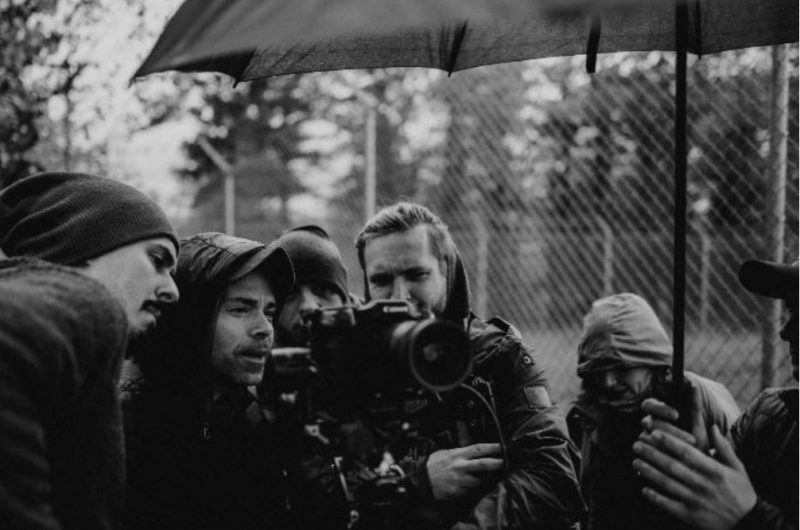


Fascinating history! Thank you!
I’m a little confused by these numbers. Could you please clarify? 15,000 a month? Is that the wage/salary per worker? By 1948 it was the largest employer of women in Escanaba and was planning within weeks to expand to 140 women working on 200 machines for 40-hours a week. At its peak it paid $15,000 on a monthly basis to its workers.
Thanks, I appreciate learning about this UP history.
I was curious about that myself. I think it was combined wages for all employees and shows a measure of success for that business.